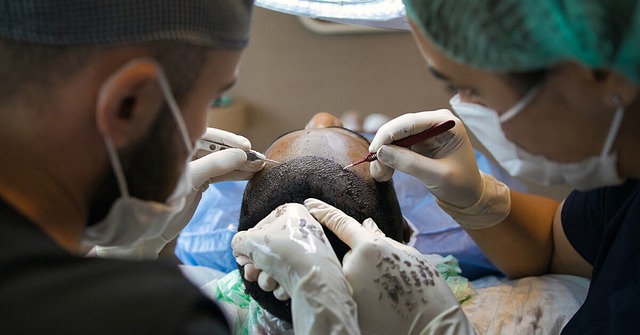Hair loss can significantly impact one’s confidence, leading many to explore options for restoring their hair. Hair transplants, a popular choice, can combat thinning or balding areas by relocating hair follicles. Here’s more information about how hair transplants work, what to expect, and if they’re the right option for you:
Hair Transplants and You
A hair transplant is a procedure that moves hair follicles from one area of the body, typically where hair is naturally thicker, to areas experiencing thinning or balding. The goal is to create a fuller and more even appearance of hair. The transplanted hair continues to grow in its new location as the procedure relocates the actual follicle, not just the hair strands. Over time, the transplanted hair blends seamlessly with the surrounding areas, improving the overall coverage.
Types of Transplants
For hair transplantation, hair follicles can be extracted from the back of the head or from various parts of the body and then implanted in thinning areas. Hair is most commonly taken from the back or sides of the head, as these areas tend to be more resistant to dihydrotestosterone (DHT), the hormone linked to genetic hair loss. Follicles from other parts of the body, such as the beard or chest, are sometimes used. Body hairs may be less resistant to DHT, potentially reducing their longevity. Some common areas that are affected by hair loss and can benefit from hair transplant procedures include:
- Beard
- Chest
- Eyebrows & Eyelashes
- Mustache
The Process and You
Prior to the procedure, you’ll meet with a hair restoration specialist who will evaluate your hair loss pattern, discuss your medical history, and determine if you’re a good candidate for a transplant. They will detail the process, give an overview of what to expect, and outline a plan for achieving your goals. Your specialist may also provide instructions on how to prepare for the procedure. This might include avoiding alcohol, smoking, or certain medications in the days leading up to the transplant.
During the Procedure
On the day of treatment, the specialist begins by numbing the donor and recipient areas to make the procedure more comfortable. Depending on your treatment plan, your team may remove individual follicles or a strip of them for transplantation. Once extracted, the follicles are carefully implanted into the target areas.
The placement is done with precision to give you a natural-looking growth pattern. Depending on the complexity of the procedure, this process can take several hours. Those using body hair instead of scalp hair follicles may need two transplant sessions to see effective results, with time for healing in between each treatment.
After the Procedure
Following the transplant, your scalp may feel tender or swollen for a few days. The specialist will provide aftercare instructions to help with your healing process. They will likely include instructions on how to clean the transplanted area, when to avoid strenuous activities, and when you can expect scabs to form and fall off naturally. It’s normal to notice some shedding of the transplanted hair in the first few weeks, but new growth is coming. New growth typically begins within a few months, with the full effects of the transplant showing at around a year. The transplanted hair should blend in with your natural hair over time, creating a more even distribution.
Benefit From a Hair Transplant
Transplants offer a potential solution for those experiencing hair loss, using advanced techniques to restore hair in needed areas. With expert guidance, proper planning, and specialized procedures, you can achieve natural-looking results that boost your confidence. Reach out to a qualified hair restoration specialist. They can help evaluate your situation and discuss the best approach suited to your needs.

